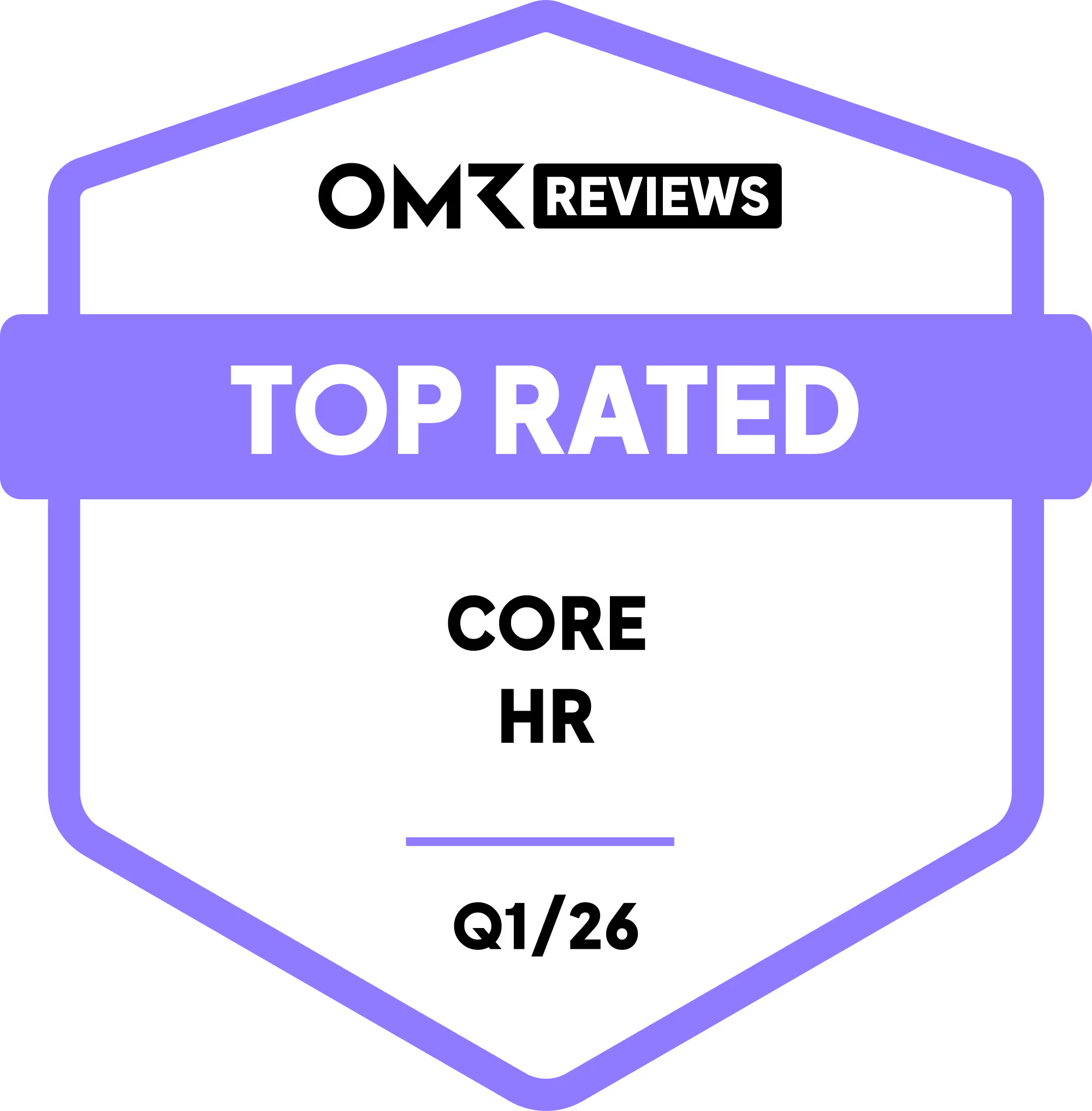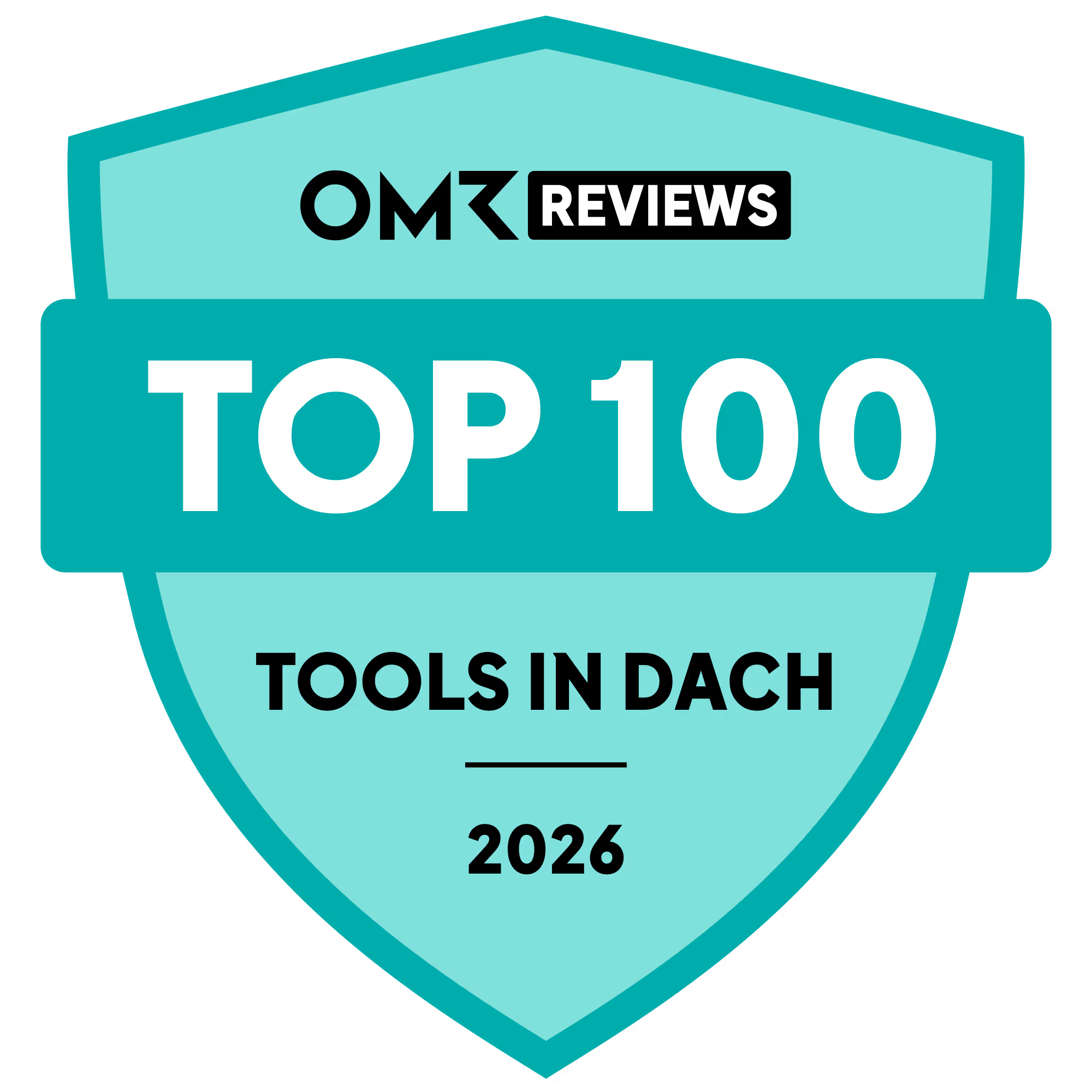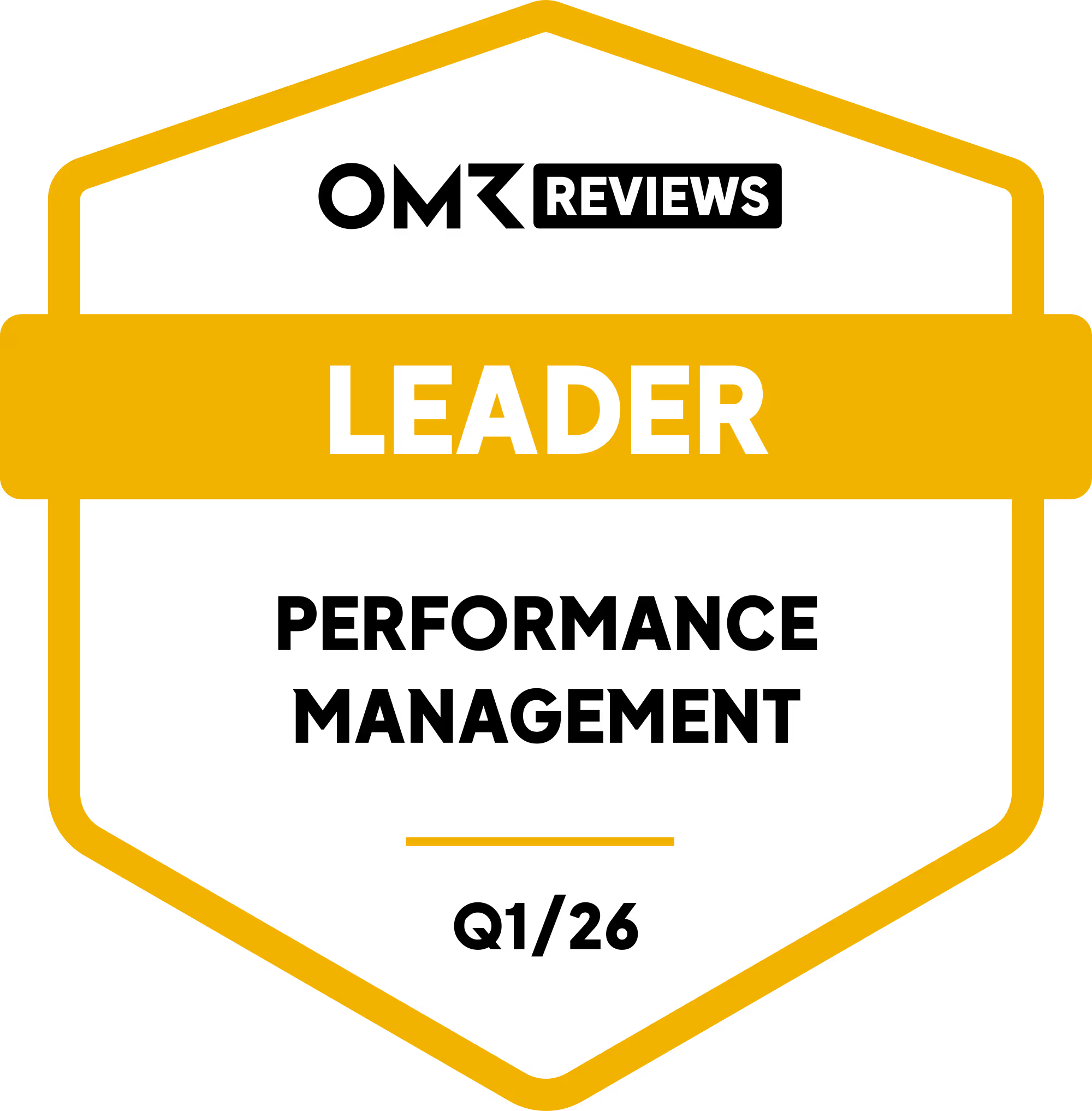9 effektive strategische Planungsmodelle für Ihr Unternehmen

Strategische Planungsmodelle können für Ihr Unternehmen einen großen Unterschied machen. Das gilt unabhängig davon, ob Sie ein Startup sind, das eine Gesamtstrategie entwickelt, oder ein etabliertes Unternehmen, das interne Prozesse optimiert.
Es gibt jedoch viele strategische Planungsmodelle, und es ist wichtig, eines auszuwählen, das Ihrem Zweck und Ihren Bedürfnissen entspricht. Das richtige Framework hilft Ihnen dabei, Prozesse zu rationalisieren, die Ausrichtung voranzutreiben und Ihr Unternehmen voranzubringen.
Um Ihren Rechercheprozess zu unterstützen, haben wir eine Liste der effektivsten strategischen Planungsmodelle und ihrer wichtigsten Anwendungsfälle zusammengestellt. Lass uns einen Blick darauf werfen.
🧐 Suchen Sie nach einem flexiblen Framework, mit dem Sie Ihre Geschäftsziele erreichen können?
Die Zielmanagement-Tools von Leapsome passen zu jedem strategischen Planungsprozess.
👉 Erfahre mehr
Was ist ein strategisches Planungsmodell?
Ein strategisches Planungsmodell ist ein Rahmen, der es Unternehmen ermöglicht, ihre kurz- und langfristigen Geschäftspläne zu entwerfen. Sie können helfen:
- Hindernisse erkennen und überwinden
- Verbessern und rationalisieren Sie Ihre Abläufe
- Erreichen Sie übergeordnete Geschäftsziele
- Stellen Sie eine Abstimmung zwischen verschiedenen Abteilungen her
- Verfolgen Sie den Fortschritt im Laufe der Zeit
Und Sie müssen Ihr Unternehmen nicht auf ein strategisches Planungsmodell beschränken. Unternehmen können von der Verwendung mehrerer Ansätze profitieren, auch gleichzeitig. Verschiedene strategische Planungsmodelle eignen sich jedoch am besten für unterschiedliche Situationen. Treffen Sie Ihre Wahl daher auf der Grundlage Ihres Geschäftstyps, Ihrer Wachstumsphase, Ihrer Prioritäten und Ziele.
9 Modelle für strategische Planung
Dies sind einige der beliebtesten strategischen Planungsmodelle. Unsere Liste enthält eine Definition jedes Modells, ein Beispiel dafür in Aktion und für welche Anwendungsfälle es am besten geeignet ist.
1. Ziele und zentrale Ergebnisse (OKRs)
OKRs sind ein beliebter Rahmen zur Zielsetzung, den Organisationen, Teams und Einzelpersonen verwenden, um langfristige Ziele zu definieren und Fortschritte zu verfolgen. Um das besser zu verstehen Bedeutung von OKRs, packen wir das Akronym aus:
- Ziele — ehrgeizige, aber erreichbare langfristige Ziele
- Wichtigste Ergebnisse — Meilensteine, anhand derer die Fortschritte bei der Erreichung der einzelnen Ziele gemessen werden
Erstellen Sie bei der Festlegung Ihrer OKRs vierteljährliche Ziele für alle Unternehmensebenen — Leapsome hat eine kostenlose OKR-Vorlage um Ihnen den Einstieg zu erleichtern. Überprüfe dann regelmäßig deine OKRs, um deinen Fortschritt zu überwachen und gegebenenfalls Anpassungen vorzunehmen. Du kannst sie auch regelmäßig einführen OKR-Sitzungen zu den internen Prozessen Ihrer Organisation.
OKR-Beispiel
Hier ist ein Beispiel für ein OKR für ein B2B-SaaS-Unternehmen:
Ziel | Skalieren Sie unseren Kundenstamm erheblich und stellen Sie unser großartiges Produkt mehr Menschen zur Verfügung
- Wichtigste Ergebnisse:
- Erhöhen Sie die Konversionsrate für Verkäufe von 25 auf 30%
- Reduzieren Sie die Benutzerabwanderung von 5 auf 3%
- Veröffentlichen Sie vierteljährlich eine erfolgreiche Fallstudie auf unserer Website
- Erreiche mindestens 4,7 von 5 Bewertungen auf allen wichtigen Bewertungsseiten
Am besten für
OKRs eignen sich am besten für Organisationen, die ihre Ziele besser aufeinander abstimmen möchten. Indem OKRs unternehmensweite Ziele in kleinere, überschaubare Aufgaben unterteilen, stellen sie sicher, dass alle auf ein gemeinsames Ziel hinarbeiten.
OKRs zeigen den Mitarbeitern auch, wie ihre Arbeit zum Gesamtbild beiträgt, geben ihnen ein Gefühl von Zielstrebigkeit und fördern Engagement der Mitarbeiter. Forschung von Gallup verbindet engagierte Mitarbeiter mit niedrigeren Fluktuationsraten, besserer Arbeitsleistung und einer blühenden Arbeitskultur. Folglich helfen OKRs Unternehmen dabei, erfolgreiche Arbeitsplätze aufzubauen.
.png)
💡 Sie fragen sich, wie Sie OKRs in Ihrer Organisation einführen können?
Verwenden Sie das flexible Framework von Leapsome, um unternehmensweite Ziele festzulegen und diese an einem intuitiven Ort zu verfolgen.
👉 Erfahre mehr
2. SWOT-Analyse
SWOT steht für Stärken, Schwächen, Möglichkeiten, und Bedrohungen. Verwenden Sie das SWOT-Modell, um interne und externe Faktoren zu definieren, die Ihr Unternehmen beeinflussen. Vergleichen Sie dann die verschiedenen Faktoren, um das Risiko einer potenziellen Strategie einzuschätzen.
Wenn beispielsweise die Stärken Ihres Unternehmens mit den Marktchancen übereinstimmen — sagen wir, Sie haben viel Kapital und Ihre Konkurrenten nicht —, wissen Sie, dass Sie einen Wettbewerbsvorteil haben. In diesem Szenario können Sie eine offensive Geschäftsstrategie mit relativ geringem Risiko verfolgen.
SWOT-Beispiel
Hier ist ein SWOT-Beispiel für eine Vertriebsorganisation:
- Stärken — Wir haben ein hervorragendes Verhältnis zu unseren Kunden und einen treuen Kundenstamm.
- Schwächen — Unsere derzeitige Lieferkette ist unzureichend.
- Möglichkeiten — Es besteht eine hohe Kundennachfrage nach einem unserer Produkte.
- Bedrohung — Unser Hauptkonkurrent entwickelt ein ähnliches Produkt.
Basierend auf dieser SWOT-Analyse befindet sich unsere Beispielorganisation nicht in einer starken strategischen Position. Es besteht das Risiko, dass sie nicht genug von ihrem Produkt produzieren oder vertreiben, um die Nachfrage zu decken, und ihr Konkurrent hat das Potenzial, sie zu übertreffen. Sie sollten der Optimierung ihres Produktangebots und der Lösung von Lieferkettenproblemen Vorrang vor der Generierung von Leads oder der Arbeit an einer aggressiven Marketingkampagne einräumen.
Am besten für
Jedes Unternehmen kann von der SWOT-Analyse profitieren. Es ist jedoch am besten, es zu Beginn einer neuen Strategie und mit einem bestimmten Ziel vor Augen zu verwenden. Sie könnten einen SWOT-Ansatz ausprobieren, wenn Sie Prioritäten festlegen, z. B. bei der Implementierung neuer Technologien oder der Umstrukturierung Ihres Unternehmens.
3. PEST- oder PESTLE-Analyse
Die PEST-Analyse konzentriert sich auf externe Faktoren, die Ihr Unternehmen beeinflussen können. Die Buchstaben stehen für:
- Politisch
- Wirtschaftlich
- Soziokulturell
- Technologisch
Und je nach Branche können Sie bei der Herstellung von PESTLE rechtliche und ökologische Faktoren hinzufügen.
Beispiel für PEST oder PESTLE
Hier ist ein Beispiel für eine PESTLE-Analyse für ein multinationales Süßwarenunternehmen:
- Politische Faktoren — Die Regierung eines Landes, in dem wir viele Produkte verkaufen, plant, die Importzölle zu erhöhen.
- Wirtschaftliche Faktoren — Unsere Zielgruppe (13- bis 21-Jährige) hat jetzt, da die Covid-19-Beschränkungen aufgehoben wurden, ein höheres verfügbares Einkommen.
- Soziokulturelle Faktoren — Umfragen zufolge halten Kunden unsere Produkte für gesund.
- Technologische Faktoren — Die Ingenieure haben eine effizientere Methode entwickelt, um den Hauptbestandteil der Hälfte unserer Produkte anzubauen.
- Rechtliche Faktoren — Die FDA hat unseren neuesten Schokoriegel zugelassen.
- Umweltfaktoren — NGOs drängen uns, umweltfreundlichere Verfahren anzuwenden.
Am besten für
Mit der PEST-Analyse können Sie das Geschäftsumfeld für ein Produkt oder eine Dienstleistung beurteilen, sodass sie am besten in der Anfangsphase eines Projekts verwendet werden kann.
4. Das Balanced Scorecard-Framework
Mit dem Balanced Scorecard-Framework können Sie bei der Geschäftsplanung einen ganzheitlichen Ansatz verfolgen, der sich nicht nur auf die wirtschaftliche Leistung konzentriert. Stattdessen betrachten Sie vier Perspektiven:
- Finanzielle Vorausschau — wie gut Ihr Unternehmen wirtschaftlich abschneidet
- Kundenperspektive — Ihre Kundenzufriedenheit und Kundenbindung
- Interne Geschäftsperspektive — die Qualität und Effizienz Ihrer internen Abläufe
- Innovations- und Lernperspektive — Ihre Fähigkeit, Ihr Unternehmen zu verbessern, auszurichten und auszubauen
Erstellen Sie dann Ziele und definieren Sie Maßnahmen, um Ihre Fortschritte für jede Perspektive zu verfolgen. Diese Maßnahmen werden Sie bei der Planung und Durchführung von Initiativen zur Erreichung Ihrer Ziele unterstützen. Und während Sie diese Strategie umsetzen, können Sie Ihre Scorecard aktualisieren, um Ihre Fortschritte aufzuzeigen.
Beispiel für eine Balanced Scorecard
Das Management von ECI (Electronic Circuits Inc.) wollte seine Lieferzeiten verbessern. Als sie jedoch mit Kunden über das Problem sprachen, erhielt das Unternehmen unzuverlässiges Feedback — verschiedene Personen hatten unterschiedliche Definitionen von „pünktlich“.
Mithilfe des Balanced Scorecard-Frameworks verlagerten die Manager den Fokus auf ihre betrieblichen Abläufe und überprüften die Effizienz ihres Herstellungsprozesses. Sie entdeckten Möglichkeiten, die Zykluszeit, den Ertrag und die Kosten des Unternehmens zu optimieren.
Obwohl die Balanced Scorecard keine verlässliche Kundenperspektive hatte, bot der umfassende Überblick über die ECI-Organisation eine vielseitige Lösung zur Verkürzung der Lieferzeiten und zur Rationalisierung des gesamten Geschäftsbetriebs.
Am besten für
Das Balanced Scorecard-Framework eignet sich am besten, um den Zustand Ihres Unternehmens zu verstehen und eine unternehmensweite Ausrichtung zu erreichen.
5. Die fünf Streitkräfte von Porter
Porter's Five Forces ist ein Ansatz, mit dem Sie den Wettbewerbsvorteil Ihres Produkts oder Ihrer Dienstleistung auf dem Markt beurteilen können. Die Identifizierung potenzieller Bedrohungen kann Ihr Unternehmen bei der Entwicklung eines dynamischeren strategischen Plans unterstützen.
Die „Fünf Kräfte“, die Ihr Produkt beeinflussen können, sind:
- Die Bedrohung durch neue Wettbewerber — Entstehen in Ihrer Branche viele neue Unternehmen? Wie einfach ist es für neue Unternehmen, ein ähnliches Produkt oder eine Dienstleistung wie Ihre zu entwickeln?
- Die Anzahl der bestehenden Wettbewerber — Mit wie vielen direkten Wettbewerbern haben Sie es zu tun? Was ist mit benachbarten Wettbewerbern? Wächst einer von ihnen schnell?
- Die Verhandlungsmacht der Lieferanten — Könnten Lieferanten Druck auf Sie ausüben, Ihre Kosten zu senken oder Ihr Geschäftsmodell zu ändern?
- Die Verhandlungsmacht der Kunden — Sind Ihre Produkte oder Dienstleistungen woanders erhältlich? Besteht eine Nachfrage nach ihnen? Haben die Leute Probleme mit Ihrer Preisgestaltung oder Qualität?
- Die Gefahr eines Ersatzes — Wie wahrscheinlich ist es, dass ein ähnliches Produkt oder eine ähnliche Dienstleistung auf den Markt kommt?
Porters Beispiel für Five Forces
Nehmen wir das Beispiel eines Kosmetikunternehmens, das plant, ein Shampoo mit SPF 50 auf den Markt zu bringen:
- Die Bedrohung durch neue Wettbewerber — Für die Entwicklung des Shampoos ist Fachwissen erforderlich, was ein Hindernis für den Markteintritt von Wettbewerbern darstellt.
- Die Anzahl der bestehenden Wettbewerber — Zwei Unternehmen mit ähnlichen Produkten sind bereit zu wachsen. Sie könnten ein fast identisches Produkt herstellen und sie unter Druck setzen, die Kosten zu senken.
- Die Verhandlungsmacht der Lieferanten — Es gibt eine große Anzahl von Lieferanten, daher haben sie wenig Verhandlungsmacht.
- Die Verhandlungsmacht der Kunden — Je nachdem, wo die Kunden leben, betrachten sie das Shampoo als saisonales Produkt. Da in den Ländern mit dem größten Kundenstamm fast Winter ist, ist die Nachfrage geringer.
- Die Gefahr eines Ersatzes — Untersuchungen deuten darauf hin, dass kein Produkt, das sich derzeit in der Entwicklung befindet, den gleichen Bedarf decken könnte (Schutz der Kopfhaut vor Sonnenbrand).
Am besten für
Die Five Forces von Porter eignen sich am besten für die Bewertung Ihres Produkts oder Ihrer Dienstleistung nach der Entwicklung, aber vor dem Markteintritt. Es ist auch hilfreich, um die allgemeine Wettbewerbsposition eines Unternehmens zu beurteilen.
6. Das VRIO-Framework
Das VRIO-Framework hilft Unternehmen dabei, festzustellen, ob sie eine Ressource in einen Wettbewerbsvorteil verwandeln können. Dabei kann es sich um physische Ressourcen wie Inventar, Werkzeuge und Technologie oder um nichtphysische Ressourcen wie Patente, Fähigkeiten und Arbeitskultur handeln.
Lassen Sie uns das Akronym VRIO aufschlüsseln, um zu verstehen, wie jede Ressource bewertet wird:
- Wertvoll — Die Ressource steigert den Umsatz oder senkt die Betriebskosten.
- Selten — Die Ressource ist begrenzt oder Sie kontrollieren den Vorrat.
- Unnachahmlich — Die Ressource ist einzigartig oder komplex, was bedeutet, dass es für Wettbewerber schwierig ist, sie zu kopieren.
- Organisatorisch — Ihr Unternehmen kann das volle Potenzial der Ressource ausschöpfen.
VRIO-Beispiel
Hier ist ein Beispiel für ein Lieferunternehmen, das feststellt, ob es seine Ressourcen — Distributionszentren — nutzen kann, um sich einen Wettbewerbsvorteil zu verschaffen:
- Wertvoll — Alle Vertriebszentren befinden sich in strategischen Positionen, was sie zu einer wertvollen Ressource macht, da das Unternehmen ihren Standort nutzen kann, um effizientere Lieferwege zu schaffen.
- Selten — Das Vertriebsnetz ist eine knappe Ressource, da es nur wenige Häfen für den internationalen Versand gibt.
- Unnachahmlich — Wettbewerber könnten Vertriebszentren an nahe gelegenen Standorten errichten.
- Organisatorisch — Die Auslieferungsfahrer nutzen nicht die effizientesten Routen zwischen den Vertriebszentren.
Das Lieferunternehmen könnte einen vorübergehenden Wettbewerbsvorteil haben, nutzt diese Ressource jedoch nicht aus. Das Management muss sich mit allem befassen, was die Zusteller davon abhält, die schnellste Route zu wählen, bevor konkurrierende Lieferunternehmen dieselbe Ressource kopieren und kontrollieren.

Strategische Planungsmodelle wie VRIO helfen Ihnen dabei, Ihren Wettbewerbsvorteil zu ermitteln
Am besten für
Das VRIO-Framework eignet sich am besten für Unternehmen, die entscheiden, wie sie ein neues Produkt oder eine neue Dienstleistung auf den Markt bringen oder ihr bestehendes Geschäftsmodell verbessern können.
Insbesondere die organisatorische Kennzahl zeigt, wie effizient Ihre Organisation ihre Ressourcen nutzt. Wenn Sie bei den ersten drei Kennzahlen eine hohe Punktzahl erreicht haben, den Wert Ihrer Ressourcen aber immer wieder nicht erfassen, ist das ein Zeichen dafür, dass Sie Ihre internen Prozesse verbessern müssen.
Kombinieren Sie das VRIO-Framework mit den Five Forces von Porter, um bei der Markteinführung eines neuen Produkts eine klare strategische Ausrichtung zu erzielen.
7. Das Hoshin-Planungsframework
Das Hoshin-Planungsframework ist hauptsächlich ein von oben nach unten gerichteter Ansatz. Diese Methode umfasst sieben strategische Planungsphasen:
- Definiere deine Vision um den Hauptzweck Ihrer Organisation zu verdeutlichen.
- Entwickeln Sie Ihre Hauptziele um Ihrem Unternehmen einen Wettbewerbsvorteil zu verschaffen.
- Teilen Sie die Ziele in kleinere Jahresziele auf.
- Setzen Sie sich Ziele für Ihr gesamtes Unternehmen — auf C-Ebene, auf Führungs-, Abteilungs- und Einzelebene.
- Setzen Sie Ihre Pläne um.
- Führen Sie monatliche Überprüfungen durch um die Fortschritte zu reflektieren und zu überwachen.
- Führen Sie eine jährliche Überprüfung durch um festzustellen, ob Sie Ihre Ziele erreicht haben und woran Sie als Nächstes arbeiten müssen.
Es ist erwähnenswert, dass das Hoshin Planning Framework dies nicht tut müssen sein ausschließlich von oben nach unten. Ein weiterer Kerngedanke hinter dieser Methode ist, dass Manager in den ersten vier Phasen „Catch Ball“ spielen sollten — das heißt, Ideen zwischen Management, Abteilungsleitern und Teammitgliedern austauschen sollten.
Beispiel für Hoshin Planning
So könnte ein Autohersteller das Hoshin Planning Framework implementieren:
- Das Management teilt seine Vision der Entwicklung der innovativsten Technologie auf dem Markt.
- Sie entscheiden über ihr Hauptziel soll bis Ende 2025 das erste selbstfahrende Auto entwickeln. Aber wenn die Unternehmensleitung mit dem technischen Leiter spricht, sagen sie, dass dieser Durchbruch bis 2025 nicht möglich sein wird. Sie passen gemeinsam die Frist auf 2027 an.
- Das Management unterteilt dieses Ziel in kleinere Ziele. Eine davon ist, herauszufinden, was das selbstfahrende Auto in jedem Szenario können sollte. Die technische Abteilung stimmt diesem Plan zu.
- Diese Ziele fließen in detaillierte Initiativen ein, wie das Beobachten von realen Fahrunfällen und das Sammeln von Daten zu Verkehr und Unfällen.
- Alle Parteien führen die vereinbarten Initiativen durch. Nach einem Monat führt das Management ein Meeting durch, um den Fortschritt aller Beteiligten zu überprüfen.
- Ein Jahr später liegen der technischen Abteilung Daten zu den meisten Szenarien vor, denen das selbstfahrende Auto auf der Straße begegnen würde.
Am besten für
Unternehmen mit komplexen Prozessen — wie Fertigungs- und Technologieunternehmen — nutzen eher das Hoshin Planning Framework. Ihre Betriebsabläufe profitieren von der Idee des „Catch Ball“ -Konzepts, da es einfacher ist, Probleme zu erkennen, wenn Sie sie durch verschiedene Teams filtern.
Das Hoshin Planning Framework ist auch ideal, um eine Ausrichtung innerhalb Ihres Unternehmens herzustellen. Ziehen Sie es für eine größere Organisation in Betracht, in der Projektprobleme und Engpässe aufgetreten sind.
8. Das Modell der Theorie des Wandels
Das Modell der Theorie des Wandels beinhaltet die Festlegung langfristiger Ziele und die Rückwärtsarbeit. Beginnen Sie mit Ihrem gewünschten Ergebnis und gehen Sie alle Voraussetzungen durch, die erforderlich sind, damit es Wirklichkeit wird. Während dieses Prozesses legen Sie fest, was sich ändern muss, um Ihre Ziele zu erreichen.
Beispiel für eine Theorie des Wandels
Gemeinnützige Organisationen mit bestimmten Aufgaben verwenden häufig das Modell der Theorie des Wandels. Nehmen wir zum Beispiel die Alphabetisierung von Erwachsenen. Das Projektteam würde mit einer idealen Situation beginnen — zum Beispiel mit einer Alphabetisierungsrate von 100% in ihrem Land — und rückwärts arbeiten, um herauszufinden, was sie daran hindert, dieses Ziel zu erreichen. Die Probleme könnten von einem Mangel an finanziellen Mitteln bis hin zur Notwendigkeit reichen, das Bewusstsein für bereits verfügbare Ressourcen zu schärfen. Dann könnte das gemeinnützige Team beginnen, sich mit den identifizierten Problemen zu befassen.
Am besten für
Jede Organisation kann vom Theory of Change-Framework profitieren. Dennoch eignet es sich am besten für bestimmte Projekte, wie die Expansion Ihres Unternehmens ins Ausland oder die Eröffnung einer neuen Abteilung, da es die Szenarioplanung beinhaltet.
9. Die Blue Ocean-Strategie
Die Blue Ocean-Strategie ist ein strategisches Planungsmodell, das in letzter Zeit populär geworden ist. Diese 2004 entwickelte Methode bewertet, ob Ihr Unternehmen in einem gesättigten Markt tätig ist. Wenn ja, geht die Blue Ocean-Strategie von der Annahme aus, dass es besser ist, neue Nachfrage zu schaffen.
In der Strategie ist der „Ozean“ eine Metapher für den Markt. Der „rote Ozean“ ist voller Raubtiere (große Unternehmen), die um Nahrung (Kunden) konkurrieren und das Wasser rot färben, wohingegen der „blaue Ozean“ tiefes, unerforschtes Wasser voller Potenzial ist (unbestrittener Marktraum). Hier ist eine Liste von Indikatoren dafür, dass Sie sich in einem „blauen Ozean“ befinden:
- Sie haben einen unangefochtenen Marktplatz gefunden
- Du hast die Konkurrenz irrelevant gemacht
- Sie schaffen und erfassen neue Nachfrage
- Sie brechen den Kosten-Nutzen-Kompromiss
Beispiel für Blue Ocean
Apple ist ein berühmtes Beispiel für ein Unternehmen, das in einem „blauen Ozean“ tätig ist. Obwohl es eines der führenden Technologieunternehmen der Welt ist, zieht es das Apple-Team immer noch vor, neue Produkte zu entwickeln, anstatt die Konkurrenz zu schlagen.
Am besten für
Die Blue Ocean-Strategie ist ideal für kleine Unternehmen und Start-ups, die versuchen, sich in größeren Organisationen zu etablieren. Etablierte Unternehmen in dynamischen Branchen wie der Technologiebranche können sie auch nutzen, um ihrer Konkurrenz einen Schritt voraus zu sein.
So implementieren Sie ein strategisches Planungsmodell
Sobald Sie Ihren strategischen Plan erstellt haben, sollten Sie ihn voll ausschöpfen. Hier sind einige Tipps, um sicherzustellen, dass Ihre Strategie in die Tat umgesetzt wird.
Richten Sie Ihren strategischen Planungsansatz auf Ihre Werte aus
Es stehen viele strategische Planungsmodelle zur Auswahl, und Ihr Unternehmen kann nur eine begrenzte Anzahl von Modellen implementieren. Obwohl alle von ihnen Vor- und Nachteile haben, ist keines unbedingt besser als das andere. Wählen Sie also die strategischen Planungsmodelle, die die Werte Ihres Unternehmens widerspiegeln. Auf diese Weise wird es einfacher sein, Ihre Strategie einzuführen und alle Teammitglieder mit ins Boot zu holen.
Wenn Sie ein Unternehmen sind, bei dem der Mensch im Mittelpunkt steht, sind OKRs die ideale Wahl. OKRs beziehen Ihre Mitarbeiter in Unternehmensinitiativen ein, machen interne Entscheidungen transparenter und geben allen ein Gefühl der Zielstrebigkeit.
Zuweisung von Ressourcen für den strategischen Planungsprozess
Strategische Planung ist wie jede andere Aufgabe: Sie erfordert Ressourcen wie Finanzierung, Zeit und Forschung. Sie sollten ein Budget und einen Zeitplan für jeden Teil des Prozesses haben.
Die Mitarbeiter, die Ihnen bei der strategischen Planung und Umsetzung helfen, sind ebenfalls von entscheidender Bedeutung. — ihnen Schulungen und konsequente Unterstützung anbieten. Machen Sie ihren Zeitplan für die strategische Planung frei und erstellen Sie einen Zeitplan für den gesamten Prozess, um Ihr Team auf Erfolgskurs zu bringen.

Stellen Sie sicher, dass Ihr strategischer Planungsprozess über die Ressourcen für eine erfolgreiche Entwicklung und Implementierung verfügt
Überprüfe deinen Fortschritt
Neben der Planung und Umsetzung Ihrer Strategie müssen Sie Ihre Fortschritte regelmäßig überprüfen. Das bedeutet monatliche und jährliche Überprüfungen auf allen Ebenen.
In vielen strategischen Planungsmodellen sind bereits Überprüfungen in ihre Phasen integriert. Aber selbst wenn dies nicht der Fall ist, sollten Sie sie in regelmäßigen Abständen neu bewerten. Sie können einige wichtige Leistungsindikatoren (KPIs) definieren, um den Erfolg Ihrer Initiativen und den allgemeinen Gesundheitszustand Ihres Unternehmens zu messen. Zu den beliebten KPIs gehören Umsatzwachstum, Kundenbindungsrate und Mitarbeiterzufriedenheit.
Seien Sie bereit, Ihren strategischen Plan anzupassen
Wie das Sprichwort sagt, gehen selbst die besten Pläne oft schief. Möglicherweise stellen Sie fest, dass sich die Bedingungen bei der Umsetzung Ihres strategischen Plans ändern oder dass Sie bestimmte Probleme nicht vorhergesagt haben. Der Schlüssel liegt nicht unbedingt in einer besseren Strategie, sondern in einer dynamischen Strategie. Auf diese Weise können Sie Ihren Plan anpassen und auftretende Probleme lösen.
Sie könnten sich beispielsweise für die PEST-Analyse entscheiden, sind aber offen dafür, wichtige rechtliche und ökologische Faktoren zu berücksichtigen, wenn sie auftauchen. Sie können versuchen, vorherzusagen, welche neuen Gesetze oder Weltereignisse sich auf Ihre Branche auswirken könnten. Wenn dann Bedingungen eintreten, die sich auf Ihr Unternehmen auswirken, können Sie Ihre Strategie ohne großen zusätzlichen Aufwand anpassen.
Steigern Sie die Leistung Ihres Unternehmens mit strategischen Planungsmodellen
Strategische Planungsmodelle helfen Ihnen dabei, den aktuellen Zustand Ihres Unternehmens einzuschätzen, zu entscheiden, welche Richtung Sie in Zukunft einschlagen möchten, und Ihre Pläne Ihren Mitarbeitern mitzuteilen. Sie können den Unterschied zwischen dem bloßen Fortbestand Ihres Unternehmens und dem Erfolg ausmachen.
Wenn Sie sich fragen, wie Sie ein neues strategisches Planungsmodell implementieren können, kann Leapsome professionelle Unterstützung bieten. Unser Ziele und OKR-Management-Software bietet einen anpassbaren Rahmen für das von Ihnen gewählte strategische Modell.
🚀 Starte deinen strategischen Plan mit Leapsome
Unsere Ziele und OKR-Management-Tools machen es einfach, die Strategie Ihrer Wahl umzusetzen.
👉 Eine Demo buchen
Verwandte Artikel
Zurück zum BlogSind Sie bereit, Ihre Strategie zur Mitarbeiterförderung zu verbessern?
your People operations?
Informieren Sie sich über unsere Leistungsbeurteilungen, Ziele und OKRs, Engagement-Umfragen, Onboarding und mehr.
.webp)
.webp)
 Fordern Sie noch heute eine Demo an
Fordern Sie noch heute eine Demo an




































